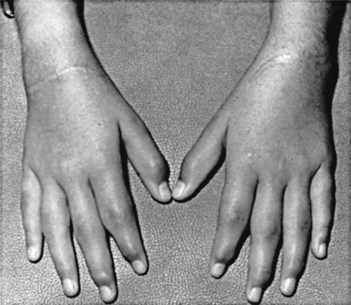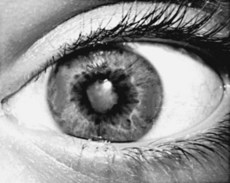135 Still’s disease
Salient features
Diagnosis
• The classic triad of Still’s disease is fever, oligoarticular arthritis and an evanescent salmon-coloured rash (which typically appears with the fever spikes), although the rash is persistent in up to one-third of patients.
• A sore throat is characteristic.
• Elevated ferritin levels, leukocyte counts, serum liver enzyme, and ESR are common.
• Still’s disease usually occurs in patients younger than 35 years of age.
Advanced-level questions
What do you know about juvenile chronic arthritis?
• Still’s disease (10–20% of cases) is defined as arthritis associated with daily temperature spikes to 39.4°C (103°F) for at least 2 weeks with or without maculopapular rash.
• Polyarticular juvenile chronic arthritis (15–25%) in which five or more joints are affected. Early fusion of the mandible and cervical spine result in a receding chin.
• Pauciarticular juvenile chronic arthritis (60–75%), which affects four or less joints; iritis is common in girls, whereas sacroiliitis is common in boys.
How would you treat a patient with juvenile chronic arthritis?
• Education about the disease, counselling and social support
• Physical and occupational therapy: monitoring and recording range of movement of joints, exercises to increase range of movement and muscle bulk, hydrotherapy, splinting
• NSAIDs: naproxen, ibuprofen, piroxicam, indomethacin, diclofenac
• Intra-articular steroids: triamcinolone, methylprednisolone acetate.
What do you know about the American College of Rheumatology Pedi Score?
• a count of joints with active arthritis
• global assessment of disease activity by the patient or a parent or guardian on a visual-analogue scale ranging from 0 (disease inactive) to 100 (maximal disease activity)
• physician’s global assessment of disease activity
• assessment of physical function by the patient or a parent or guardian (by means of the Childhood Health Assessment Questionnaire Disability Index)









